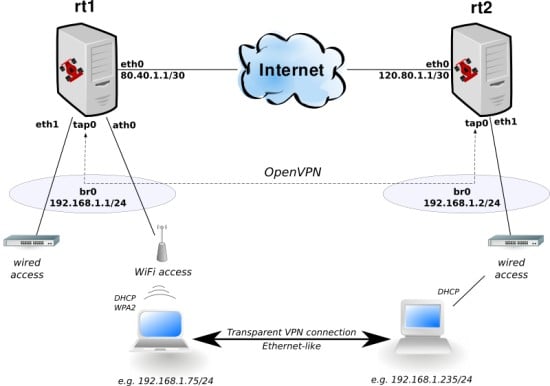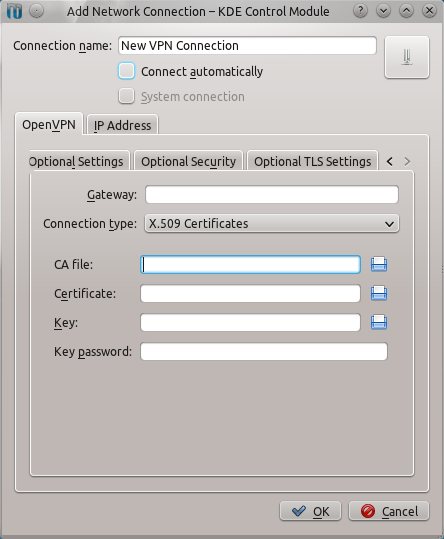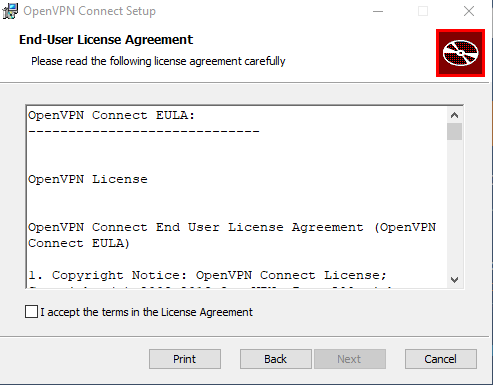-->
This article helps you configure OpenVPN ® Protocol clients.
Before you begin

The OpenVPN client v1 was called “OpenVPN Desktop Client” and is no longer available. It is also not safe to use this anymore as it hasn’t been maintained for many years. It was replaced with the OpenVPN client v2. The OpenVPN client v2 is called “OpenVPN Connect Client” and has been in use for many years. The OpenVPN server will call the plugin every time a VPN client tries to connect, passing it the username/password entered on the client. The authentication plugin can control whether or not the OpenVPN server allows the client to connect by returning a failure (1) or success (0) value. Learn how to use an OpenVPN client to connect to a Client VPN endpoint. Select your cookie preferences We use cookies and similar tools to enhance your experience, provide our services, deliver relevant advertising, and make improvements. The OpenVPN Connect Client for Windows, latest version, currently supports these operating systems: Windows 10; Windows 8 and 8.1; Windows 7 Service Pack 1; Windows Vista Service Pack 2; For Windows Server platforms we recommend the open source OpenVPN client. It comes with a service component that starts an auto-login connection as a system. In order to connect to the VPN server or service, you need to obtain a file that contains the specifics needed for the connection. Such a configuration file is called a profile and has an.ovpn file extension. If your business is using Access Server or OpenVPN Cloud and your IT department has provided you a URL, you can directly import the profile by entering the URL.

Verify that you have completed the steps to configure OpenVPN for your VPN gateway. For details, see Configure OpenVPN for Azure VPN Gateway.
Windows clients
Download and install the OpenVPN client (version 2.4 or higher) from the official OpenVPN website.
Download the VPN profile for the gateway. This can be done from the Point-to-site configuration tab in the Azure portal, or 'New-AzVpnClientConfiguration' in PowerShell.
Unzip the profile. Next, open the vpnconfig.ovpn configuration file from the OpenVPN folder using Notepad.
Export the point-to-site client certificate you created and uploaded to your P2S configuration on the gateway. Use the following article links:
VPN Gateway instructions
Virtual WAN instructions
Extract the private key and the base64 thumbprint from the .pfx. There are multiple ways to do this. Using OpenSSL on your machine is one way. The profileinfo.txt file contains the private key and the thumbprint for the CA and the Client certificate. Be sure to use the thumbprint of the client certificate.
Open profileinfo.txt in Notepad. To get the thumbprint of the client (child) certificate, select the text (including and between)'-----BEGIN CERTIFICATE-----' and '-----END CERTIFICATE-----' for the child certificate and copy it. You can identify the child certificate by looking at the subject=/ line.
Switch to the vpnconfig.ovpn file you opened in Notepad from step 3. Find the section shown below and replace everything between 'cert' and '/cert'.
Open the profileinfo.txt in Notepad. To get the private key, select the text (including and between) '-----BEGIN PRIVATE KEY-----' and '-----END PRIVATE KEY-----' and copy it.
Go back to the vpnconfig.ovpn file in Notepad and find this section. Paste the private key replacing everything between and 'key' and '/key'.
Do not change any other fields. Use the filled in configuration in client input to connect to the VPN.
Copy the vpnconfig.ovpn file to C:Program FilesOpenVPNconfig folder.
Right-click the OpenVPN icon in the system tray and click connect.
Mac clients
Download and install an OpenVPN client, such as TunnelBlick.
Download the VPN profile for the gateway. This can be done from the point-to-site configuration tab in the Azure portal, or by using 'New-AzVpnClientConfiguration' in PowerShell.
Unzip the profile. Open the vpnconfig.ovpn configuration file from the OpenVPN folder in a text editor.
Fill in the P2S client certificate section with the P2S client certificate public key in base64. In a PEM formatted certificate, you can simply open the .cer file and copy over the base64 key between the certificate headers. Use the following article links for information about how to export a certificate to get the encoded public key:
VPN Gateway instructions
Virtual WAN instructions
Fill in the private key section with the P2S client certificate private key in base64. See the Export your private key on the OpenVPN site for information about how to extract a private key.
Do not change any other fields. Use the filled in configuration in client input to connect to the VPN.
Double-click the profile file to create the profile in Tunnelblick.
Launch Tunnelblick from the applications folder.
Click on the Tunnelblick icon in the system tray and pick connect.
Important
Only iOS 11.0 and above and MacOS 10.13 and above are supported with OpenVPN protocol.
iOS clients

Install the OpenVPN client (version 2.4 or higher) from the App store.
Download the VPN profile for the gateway. This can be done from the point-to-site configuration tab in the Azure portal, or by using 'New-AzVpnClientConfiguration' in PowerShell.
Unzip the profile. Open the vpnconfig.ovpn configuration file from the OpenVPN folder in a text editor.
Fill in the P2S client certificate section with the P2S client certificate public key in base64. In a PEM formatted certificate, you can simply open the .cer file and copy over the base64 key between the certificate headers. Use the following article links for information about how to export a certificate to get the encoded public key:
VPN Gateway instructions
Virtual WAN instructions
Fill in the private key section with the P2S client certificate private key in base64. See Export your private key on the OpenVPN site for information about how to extract a private key.
Do not change any other fields.
E-mail the profile file (.ovpn) to your email account that is configured in the mail app on your iPhone.
Open the e-mail in the mail app on the iPhone, and tap the attached file
Tap on More if you do not see Copy to OpenVPN option
Tap on Copy to OpenVPN
Tap on ADD in the Import Profile page
Tap on ADD in the Imported Profile page
Launch the OpenVPN app and slide the switch in the Profile page right to connect
Openvpn Connect Client Mac Download
Linux clients

Open a new Terminal session. You can open a new session by pressing 'Ctrl + Alt + t' at the same time.
Enter the following command to install needed components:
Download the VPN profile for the gateway. This can be done from the Point-to-site configuration tab in the Azure portal.
Export the P2S client certificate you created and uploaded to your P2S configuration on the gateway. Use the following article links:
VPN Gateway instructions
Virtual WAN instructions
Extract the private key and the base64 thumbprint from the .pfx. There are multiple ways to do this. Using OpenSSL on your computer is one way.
The profileinfo.txt file will contain the private key and the thumbprint for the CA, and the Client certificate. Be sure to use the thumbprint of the client certificate.
Open profileinfo.txt in a text editor. To get the thumbprint of the client (child) certificate, select the text including and between '-----BEGIN CERTIFICATE-----' and '-----END CERTIFICATE-----' for the child certificate and copy it. You can identify the child certificate by looking at the subject=/ line.
Open the vpnconfig.ovpn file and find the section shown below. Replace everything between the and 'cert' and '/cert'.
Open the profileinfo.txt in a text editor. To get the private key, select the text including and between '-----BEGIN PRIVATE KEY-----' and '-----END PRIVATE KEY-----' and copy it.
Open the vpnconfig.ovpn file in a text editor and find this section. Paste the private key replacing everything between and 'key' and '/key'.
Do not change any other fields. Use the filled in configuration in client input to connect to the VPN.
To connect using the command line, type the following command:
To connect using the GUI, go to system settings.
Click + to add a new VPN connection.
Under Add VPN, pick Import from file…
Browse to the profile file and double-click or pick Open.
Click Add on the Add VPN window.
You can connect by turning the VPN ON on the Network Settings page, or under the network icon in the system tray.
Next steps
Openvpn Connect Client Macos
If you want the VPN clients to be able to access resources in another VNet, then follow the instructions on the VNet-to-VNet article to set up a vnet-to-vnet connection. Be sure to enable BGP on the gateways and the connections, otherwise traffic will not flow.

'OpenVPN' is a trademark of OpenVPN Inc.